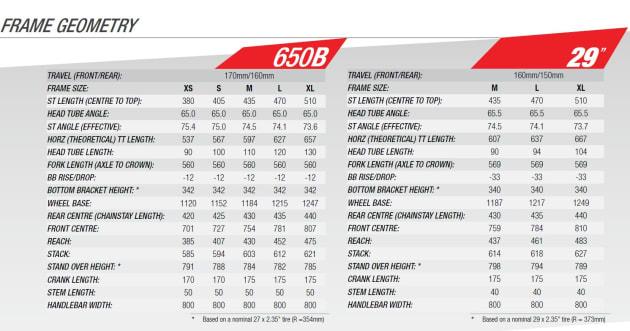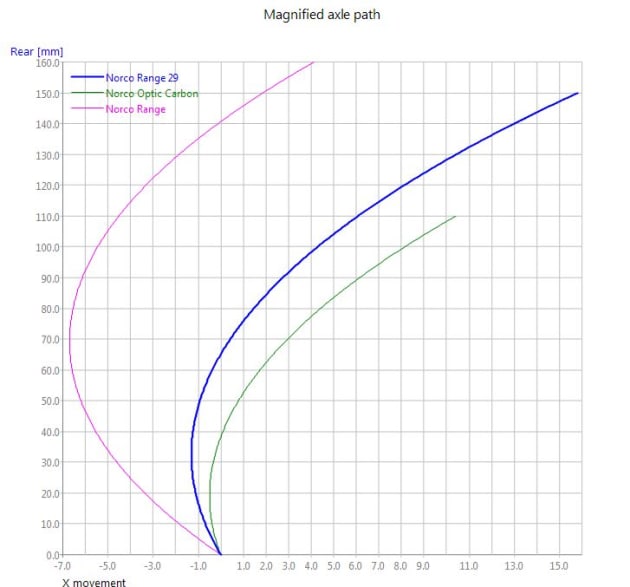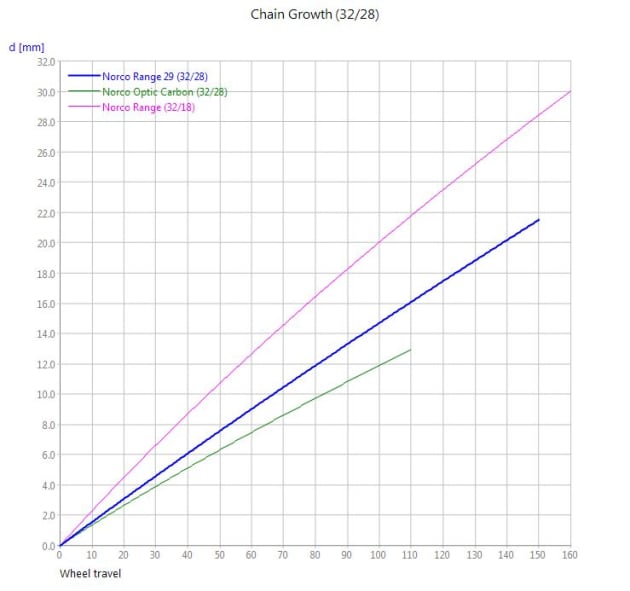Norco Range 29er - First Ride Review
The teasers have been dropping thick and fast from Norco and now the time has finally come; the Range Carbon has returned to the 2017 lineup after a four month absence. This is their long travel all-mountain/enduro rig and for the first time it’ll be offered in both 27.5 and 29-inch formats. As predicted, it closely follows the design of the recently released Sight all-mountain/trail bike, which in turn lends from the Optic (released late last year). We’ll have a comprehensive review in the next issue of Mountain Biking Australia but we can offer some initial impressions here, based on our first few rides.

Pick yer Poison
As with its predecessor, the 27.5 Range will have 160mm of travel on the rear combined with a 170mm fork. Its big wheeled counterpart will have 10mm less travel at either end: a 150/160mm travel combo.
While the amount of travel hasn’t changed massively, the frame geometry has. As is the current trend, the front centre lengths have grown substantially. The reach on a medium 27.5 Range has gone from 412mm up to 430mm. Likewise a large jumps from 432mm up to 452mm. With this roomy front centre, there’s no need to ‘upsize’ if you want to run a short stem. They’re sized appropriately out of the box and come stock with short stems; 50mm is standard on the 27.5 Range and the 29ers run a 40mm stem.
The other dimensions haven’t changed radically; the chainstays remain short and the head angle is only half a degree slacker (65 versus 65.5-degrees in the 27.5 version). What is interesting however is how close the 27.5 and 29-inch bikes are in terms of geometry and fit. The chainstay length varies along with the frame size – a feature Norco calls ‘Gravity Tune’ – but both big and small wheeled bikes run identical rear centres. A medium Range will have 430mm chainstays regardless of the wheelsize, a large is 435mm and so on. Theses chainstay lengths are short for a 27.5 wheeled bike but the measurements are especially impressive for a long travel 29er. The 29er is very slack up front too, with a 65.5-degree head angle; only half a degree steeper than the 27.5 bike. While the reach figures vary slightly between the two (in most cases the 29er is around 7mm longer), the 10mm difference in stem length means the cockpit length will feel near identical.
The only real limitation with the 29er is they were unable to cram the big wheels and 150mm of travel into the small and extra small frame sizes. Drink bottle clearance gets very tight on the medium 29er while the medium 27.5 bike will fit a full size 750ml bottle.
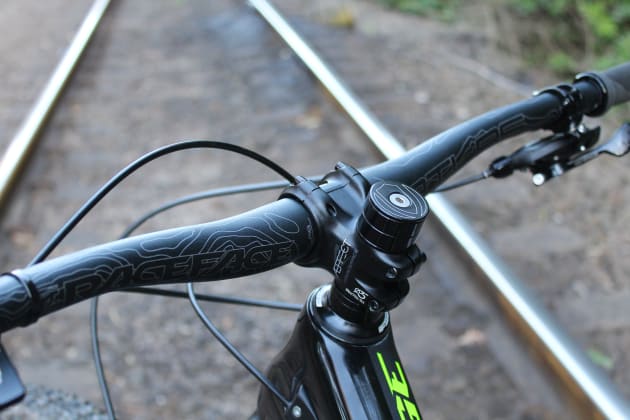
Subtle Suspension Tweaks
I’m sure most of the attention will be focused on the new wheel size option but a lot is going on in the suspension department too. While they still use the ‘ART’ suspension (Norco’s take on the Horst Link or FSR system), the pivot locations have been subtly tweaked.
Earlier Range models had a distinctly rearward axle path with lots of chain growth and very high anti-squat figures. To put it in plain english, a rearward axle path is great for absorbing square-edge hits but it lead to lots of feedback through the pedals. The suspension also stiffened noticeably when you pedalled hard with lots of torque going through the pedals. It was something that bugged some riders but not others. If your climbing was done up smoother trails and mainly in the saddle, the older Range was a solid pedaller. However, on technical climbs and sharp out-of-the-saddle efforts, the tugging back on the chain that came with the suspension movement could be off-putting.
With the recently released Optic, Norco toned back the rearward nature of the ART axle path. The low anti-squat that you now find on the Optic prioritises traction and even when you’re pedalling hard the rear end remains very active. The trade of with this is that the back end tends to sink into its travel a little under power—it’s not a huge issue on the shorter travel Optic.

Suspension-wise, the new Range sits in the middle ground. It offers higher anti-squat values than the Optic whilst still being a good deal more active than the older Range. With a few rides on the new bike, I think it’s safe to say that they’ve struck a nice balance. With 150/160mm of travel, the Range could be very mushy to pedal if the suspension were as active as the Optic. Instead the new Range is taut and efficient under power – surprisingly so for a bike with this much travel – but there’s also much less feedback through the pedals than the Range of old. Pedal up a rocky step riddled climb and the back end may firm up a little under torque but you won’t feel the same level of rhythm disrupting tugs through the drivetrain.
Progressive Nature
As with most Norco bikes, the rear suspension is quite progressive. It starts off very supple and capable of sucking up the smallest bumps. Through the mid-travel it becomes more supportive and ramps up steadily to resist bottoming on really big hits. It mightn’t be as cushy through the mid-travel as some but it doesn’t wallow or sink aimlessly into its travel either.
The sensitivity of the suspension has been enhanced by the addition of full cartridge bearing pivots at the top of the rear shock. The ‘trunnion’ style rear shock uses metric sizing; RockShox claims the new sizing system has bought them additional space for more bushing overlap and better seals.
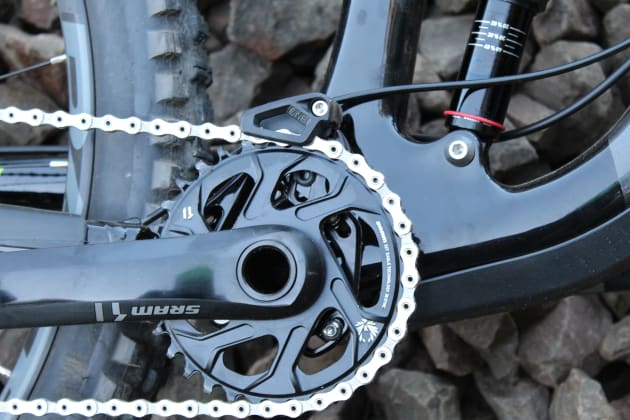
Simple Spec
While Norco will offer the Range at three price points, the Aussie market will only see the mid-range Range. We will however have both wheel sizes to choose from with the 27.5 Range C7.2 and its big wheeled counterpart, the Range C9.2. Both will retail for $7,299.
For this you get a Lyric fork, Monarch Super Delux piggyback shock, a 12-speed SRAM Eagle X01 drivetrain and Guide brakes. The bars, stem, dropper post and wheels come from RaceFace. Measuring 30mm internally, the rims are wide enough to support the meaty Maxxis tyres; a 2.5-inch Minion DHF up front and a 2.4 DHR on the back.
With this spec our medium Range 29er came in at 14.39kg and the mainly carbon frame made up 3,282g of this total (medium frame and shock).

On-Trail Impressions
We’ve had a handful of rides on the Range 29er and have plenty more planned before we finalise our thoughts. Initially we have been surprised by how efficiently the bike pedals. When climbing, there really isn't a lot of unwanted bob for a big-hitting long travel bike. The tacky tyres are slow rolling and it take some effort to get their mass moving, but not much energy is lost when pedalling the Range.
The steep 74-degree seat angle places you in a good position for climbing and it helps you to keep the front end weighted; it helps to make the uber-slack front end more manageable. When sitting on the bike, you really feel like you’re a long way behind the front wheel. It helps you to feel bulletproof on steep descents but also requires an aggressive riding stance to handle the bike on less demanding terrain.
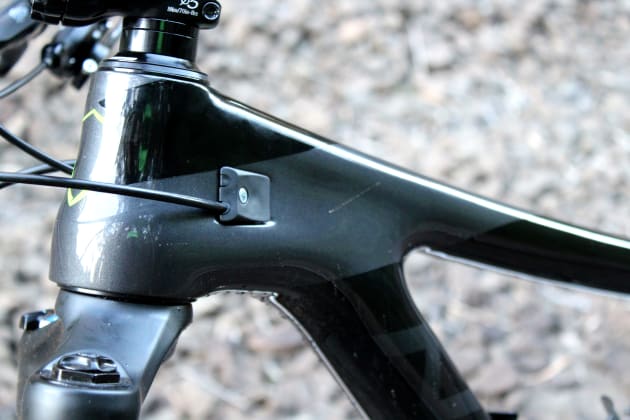
While the bike doesn’t feel unwieldy when climbing, it really comes alive when you open up the speed on rough trails. The short stays were also noticeable, making it relatively easy to flick the back end through tighter turns. There’s no denying that the Range 29er feels like a big bike, but the overall wheelbase isn’t excessive (1,187mm for the medium), so an aggressive rider can still make this rig dance through the turns.
Sure, it’s amongst the slackest big travel 29ers on the market, but so far I’ve been comfortable taking this bike on all-day rides and up some pretty big hills.
Click here to read more on the Norco site and scroll down if you want to geek out on the geometry and a few suspension kinematic graphs...
